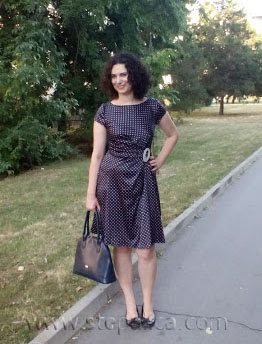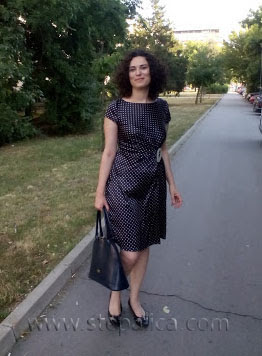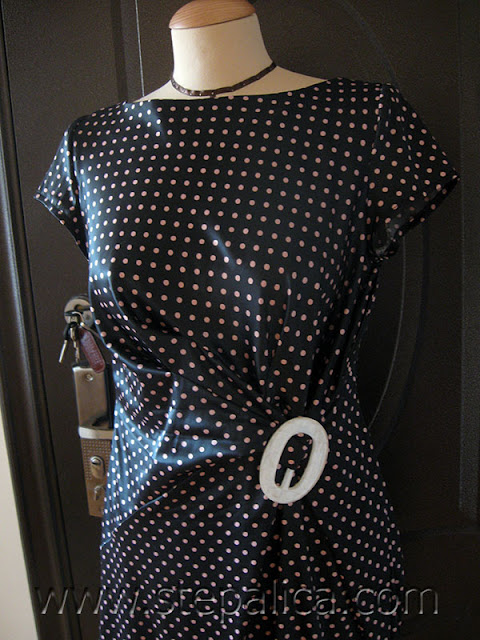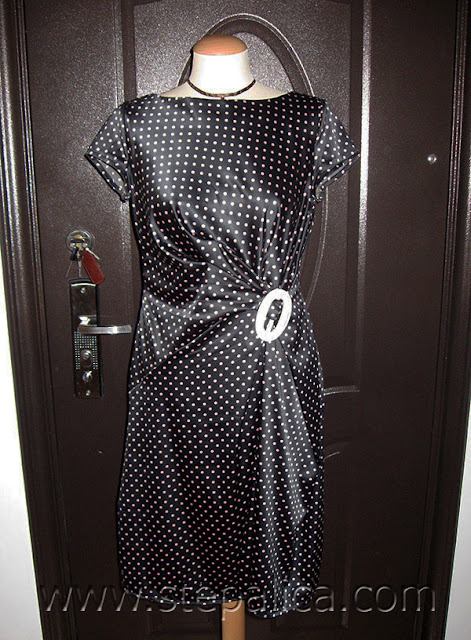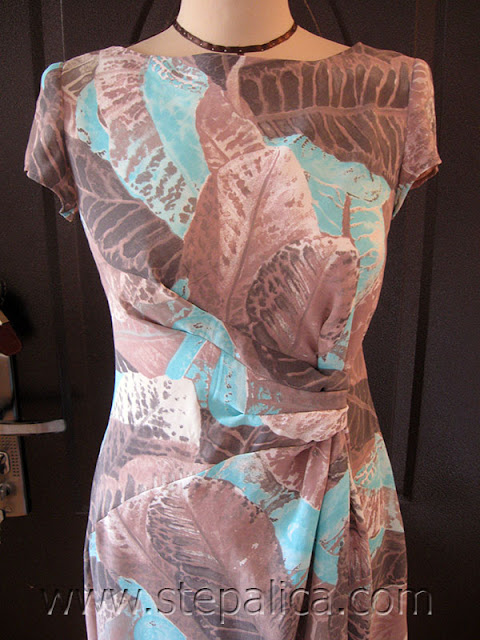Dok sam šila ovu neobičnu haljinu za drugaricu, prošla sam kroz nekoliko faza i raspoloženja prema kroju. Da potsetim, u pitanju je kroj iz Burde 12/2012, #112. Prvo sam bila raspamećena njime, potom sam pomislila kako je čvor na stomaku loš detalj, koji dodaje volumen tamo gde bi ga trebalo izbegavati, a kada sam je konačno napravila divila sam se i haljini i sebi na izvedbi. Tada sam znala da želim da napravim i sebi isti model.
Inicijalni plan je bio da iznova napravim test kroj, korigujem ga po svojim merama i građi, i zapravo odradim celu korekciju na isti način kao što sam je radila i za drugaricu. Međutim, kada sam izvadila kroj u svojoj veličini, shvatila sam da me mrzi da ponovo radim sve od nule, i rešila da malo rizikujem i skratim postupak. Zato sam prenela na svoj kroj iste korekcije koje sam napravila i na drugaricinoj haljini. Odabrala sam materijal iz svog šteka tkanina, a birala sam onaj za koji mi ne bi bilo žao da ga upropastim - sintetički saten sa elastinom, u teget boji sa bledoroze tufnicama.
Ja imam kraći torzo nego drugarica i generalno sam drugačije građena od nje, pa sam očekivala da bi kroj mogao imati dodatnih problema, i pored izmena. Kada sam probala haljinu, iznenadilo me je koliko je suknja delovala ravna i uža na meni spram toga kako isti model stoji drugarici. Skoro da sam bila razočarana. No, rešila sam da ne želim da bacim sav trud i materijal, pa sam blago modifikovala haljinu, tj. malo drugačije sam aranžirala nabore. Preklop koji se prema originalnom dizajnu uvija u čvor sam provukla kroz plastičnu kopču i prišila sa haljinu.
Na žalost, imam samo par slika u maloj rezoluciji da vam ilustrujem kako haljina izgleda na meni. Priznajem, nije tako lepa kao ona koju sam šila drugarici, ali je svakako slatka, i veoma je udobna.
I evo par kvalitetnijih slika haljine na krojačkoj lutki.


